Rosh HaShanah-in-a-Box
Shanah Tova- Happy New Year!
We enter the Hebrew year 5782 with a need for celebration. We celebrate another revolution around the sun (or a full series of lunar revolutions, as the Jewish calendar goes). We celebrate the ability to safely be with friends and family again. We celebrate the sweetness of apples and honey, and the soul-stirring sound of the shofar (a ram’s horn blown to call us to introspection).
Like many of you, the COVID pandemic has taught us many lessons about the importance of community, the joy of hugging a friend, and how technology can augment but not replace our connection to the world around us. As we move into our first in-person programming year since COVID entered our lives, we hope that you will notice the ways we are using these lessons to enhance jHUB’s offerings and help you access Jewish culture, ritual, and wisdom.
One of the things we missed during the past fifteen months was our ability to travel. Trips to see families and friends, weddings and babymoons were postponed. Holiday meals shifted to Zoom. There is a sense of wonder and amazement to traveling- getting on an airplane in CLE and being transported to another location, another climate, or even another culture.
This New Year, we are offering this Rosh HaShanah-in-a-digital-box to help rekindle that sense of adventure that may have been deferred. Inside, we have some learning, experiences, and delicious recipes that can help transport us around the world to Jewish communities thousands of miles from Cleveland, while helping us celebrate with loved ones at home. One way you may choose to celebrate is with this Rosh HaShanah haggadah, written and designed by our friends at Kol HaOt for the Charles and Lynn Schusterman Family Foundation. While we often associate a haggadah with Passover, a haggadah means “telling” and simply leads us through a ritual celebration, or seder, to celebrate a holiday. We invite you to try this practice with your loved ones. Follow the Rosh HaShanah haggadah to help you reflect on the year that has passed and contemplate your expectations for the year ahead, all through tasting delicious food.
Thanks for celebrating with us, and we look forward to seeing you in person soon!
Chapter 1: What is Rosh Hashanah?
Rosh HaShanah is the Jewish New Year and comes at the beginning of a 10-day period that ends with Yom Kippur (Day of Atonement). This time period is known as the Jewish High Holy Days. Rosh HaShanah is a time for reflection and thinking about how to improve ourselves in the coming year.
When is it?
Rosh HaShanah is on the first and second days of Tishrei, the seventh month of the Jewish calendar, which falls in autumn. Some Jews celebrate only one day; the discrepancy can be traced back to how the ancient Jews announced the beginning of the festival and various interpretations regarding the required length of the holiday’s observance.
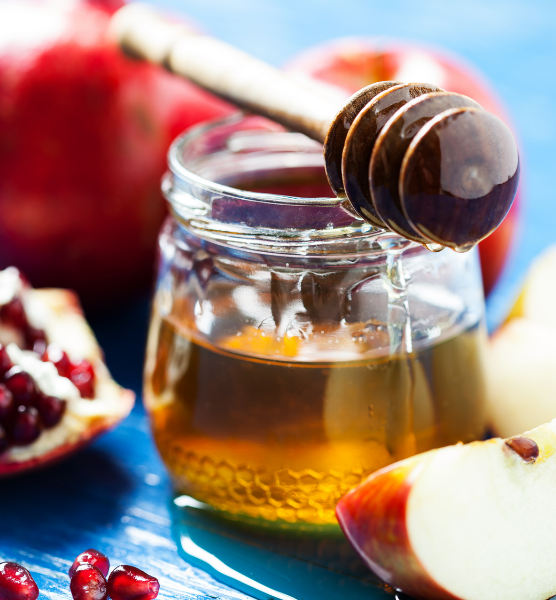
What do I need to celebrate?
As one of the High Holy Days, Rosh HaShanah is traditionally celebrated by attending services in a synagogue or temple, though there are customs and ceremonies that are observed at home. The way these customs and ceremonies are carried out can differ in countries around the world.
Let’s start with the important things to know about this festival:
Shanah Tovah The customary greeting of “Happy New Year!”
Tzedakah The practice of beginning the New Year by giving charitable gifts or doing charitable acts.
Holiday Meal Rosh HaShanah begins at sundown with a holiday meal that includes traditional blessings. A round challah is served to symbolize the cycle of years and seasons. Honey is served to symbolize hopes for a sweet new year. An Ashkenazic custom (Jews with descendants from Eastern Europe and Russia) often serves apples with the honey. There is an array of recipes from Jewish communities across the globe, including different foods that are shared to celebrate this day. As we continue, we will get to explore some of these recipes.
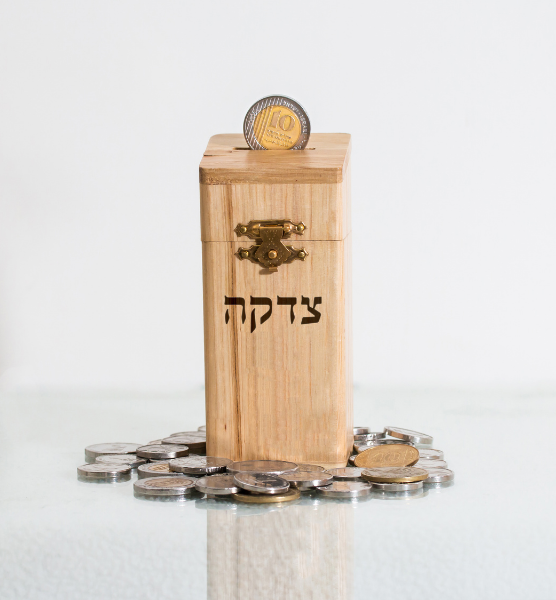
Shofar A ram’s horn that is blown like a trumpet during the Rosh HaShanah services and at the end of Yom Kippur. Sounding the shofar reminds us to look inward and strive to be our best selves in the coming year. The shofar has four different sounds:
- Tekiah One short blast
- Shvarim Three short blasts
- Teruah Nine short blasts
- Tekiah gedolah One long blast
Tashlich This Hebrew word means “to cast away.” It’s traditional to go to a body of water, such as a lake or river, on the afternoon of the first day of Rosh HaShanah for a ceremony to symbolically cast away the things we did wrong in the past year so we can start fresh in the new year.
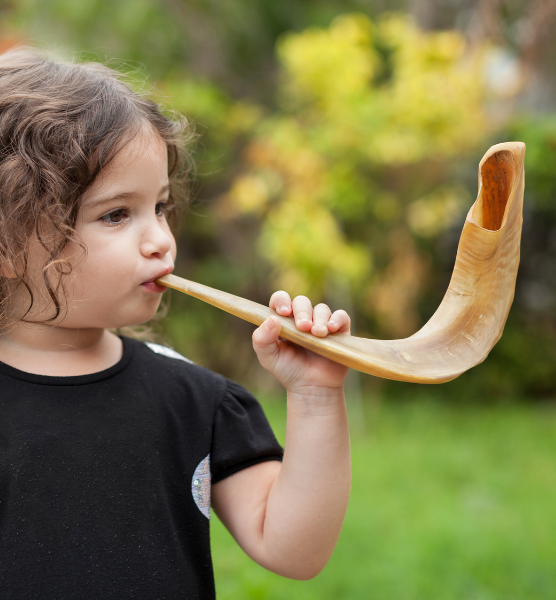
Blessings
The blessings provided below are said in the following order before the celebratory meal begins on Erev Rosh HaShanah, the evening upon which Rosh HaShanah begins.
Blessing Over the Candles
,בָּרוּךְ אַתָּה יְיָ, אֱלהֵֹינוּ מֶלֶךְ הָעוֹלָם, אֲשֶׁר קִדְּשָׁנוּ בְּמִצְוֹתָיו
.וְצִוָּנוּ לְהַדְלִיק נֵר שֶׁל יוֹם טוֹב
Barukh atah Adonai, Eloheinu Melekh ha’olam, asher kid’shanu b’mitzvotav, v’tzivanu l’hadlik ner shel Yom Tov.
Blessed are You Adonai our God, Ruler of the universe, who has made us holy through God’s commandments, and commands us to light the holiday candles.
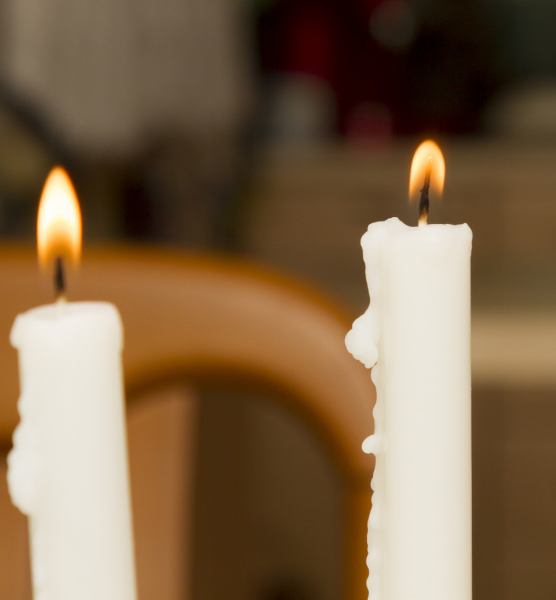
Blessing for Our Children
.יְבָרֶכְךָ יְיָ וְיִשְׁמְרֶךָ. יָאֵר יְיָ פָּנָיו אֵלֶיךָ וִיחֻנֶּךָּ. יִשָֹּא יְיָ פָּנָיו אֵלֶיךָ וְיָשֵֹם לְךָ שָׁלוֹם
Y’varekh’kha Adonai v’yish’m’rekha. Ya’eir Adonai panav eilekha viy’khuneka. Yisa Adonai panav eilekha, v’yaseim l’kha shalom.
May God bless you and protect you. May God shine upon you and be gracious to you. May God always be with you and grant you peace.
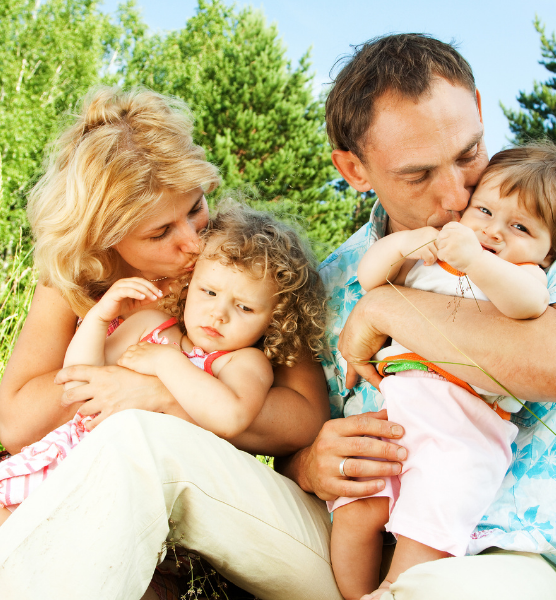
Kiddush — Blessing Over the Wine
.בָּרוּךְ אַתָּה יְיָ, אֱלהֵֹינוּ מֶלֶךְ הָעוֹלָם, בּוֹרֵא פְּרִי הַגָפֶן
Barukh atah Adonai, Eloheinu Melekh ha’olam, borei p’ree hagafen.
Blessed are You Adonai our God, Ruler of the universe, who creates the fruit of the vine.
Shehekhiyanu — Blessing for Reaching This Special Occasion
.בָּרוּךְ אַתָּה יְיָ אֱלהֵֹינוּ מֶלֶךְ הָעוֹלָם, שֶׁהֶחֱיָֽנוּ וְקִיְּמָֽנוּ וְהִגִּיעָֽנוּ לַזְּמַן הַזֶּה
Barukh atah Adonai, Eloheinu Melekh ha’olam, shehekhiyanu v’kiymanu, v’higianu laz’man hazeh.
Blessed are You Adonai our God, Ruler of the universe, for giving us life, for sustaining us and for enabling us to reach this season.
Blessing Over the Challah
.בָּרוּךְ אַתָּה יְיָ, אֱלהֵֹינוּ מֶלֶךְ הָעוֹלָם, הַמוֹצִיא לֶחֶם מִן הָאָרֶץ
Barukh atah Adonai, Eloheinu Melekh ha’olam, hamotzi lekhem min ha’aretz.
Blessed are You Adonai our God, Ruler of the universe, who causes bread to come forth from the earth.
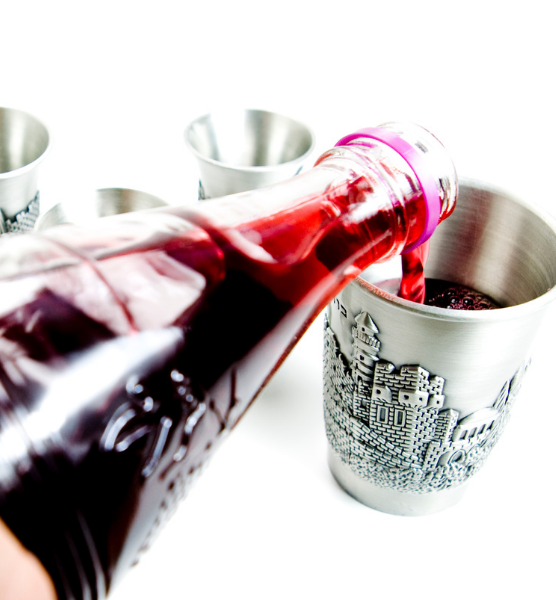
Blessing Over the Apple
.בָּרוּךְ אַתָּה יְיָ, אֱלהֵֹינוּ מֶלֶךְ הָעוֹלָם, בּוֹרֵא פְּרִי הָעֵץ
Barukh atah Adonai, Eloheinu Melekh ha’olam, borei p’ree haeitz.
Blessed are You Adonai our God, Ruler of the universe, who creates the fruit of the tree.
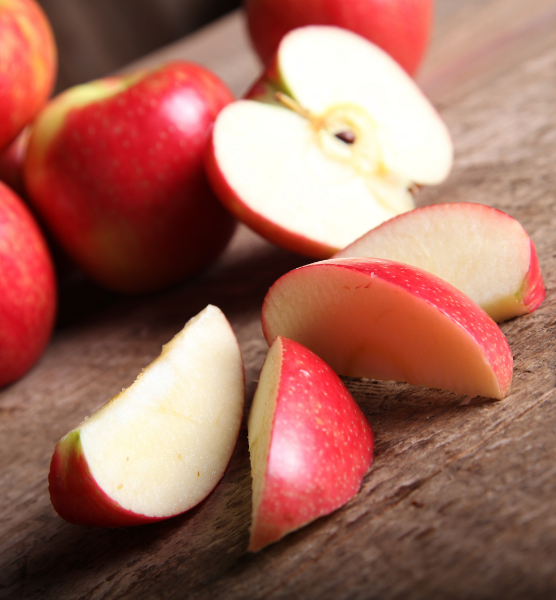
Chapter 2: What is Yom Kippur?
Yom Kippur is a day of forgiveness. Leading up to Yom Kippur, it is customary to seek forgiveness from those you have hurt, intentionally or unintentionally. It is also a time to grant forgiveness to others, acknowledging that none of us are perfect. This day of reflection empowers us to strive to be better and make fewer mistakes in the coming year. Yom Kippur is commonly translated as the Day of Atonement.
When is it?
Yom Kippur is on the tenth day of Tishrei, the seventh month of the Jewish calendar, which falls in autumn. It comes at the end of a 10-day period that begins with Rosh HaShanah (the Jewish New Year), a period known as the Jewish High Holy Days.How do I celebrate?
As one of the High Holy Days, Yom Kippur is traditionally celebrated by attending services in a synagogue or temple, though there are customs that are observed at home. Similar to Rosh HaShanah, Jewish communities in other countries observe customs in their own unique way.
Here are the essential things to know about the festival:
G’mar Khatimah Tovah or G’mar Tov – The customary greeting said on Yom Kippur and towards the end of the 10 days, meaning “May you be sealed in the book of life!”
The Book of Life – The liturgy for this holiday refers to God as a judge who determines who will live and die based on our deeds and treatment of others. While this is traditional imagery, modern Jewish theologies no longer adhere to this concept. The imagery is accepted as symbolism and encouragement for us to right our wrongs.
Fasting – Since physical rituals help us find meaning in our holidays, fasting is observed on this day to spiritually purify ourselves from our misdeeds.
Isaiah’s Fast – The prophet Isaiah rebukes the people for fasting when they do not also strive to improve themselves. Isaiah’s message is to take care of those who are vulnerable in our society, to seek justice for all people, and to free the oppressed. This biblical passage is read during services.
Mitzvot – To honor the themes of Isaiah’s fast, many congregations will hold food drives to donate nonperishable items to local food banks. Other mitzvot (good acts to fulfill the Jewish commandments) may be performed, as well.
Shofar – A ram’s horn that is blown like a trumpet at the end of Yom Kippur. Sounding the shofar makes us attentive to the imperfections in our world and reminds us to look inward and strive to be our best selves in the coming year.
Chapter 3: The High Holy Days Around The World
Throughout the world, Jewish communities honor the High Holy days by reflecting back on the past year and determining how one can better themselves in the year to come. While the meaning behind these sacred days is the same for Jewish individuals everywhere, celebrations and traditions are unique for each country, community, and even family. Together we are going to travel to three different countries; Tunisia, Uganda, and India and explore their Jewish experiences with their community, and the rich traditions that are distinctive to them.
The Jewish Communities in each of these countries have different courses in history. The Jewish communities in Tunisia and India have been around for thousands of years, while in Uganda their community was developed just a couple of hundred years ago. Their histories, and the cultures they live in as a community has helped shape their experiences and also their traditions for the high holy days and beyond.
Through the exploration of these three countries we hope you discover traditions that resonate with you and your family, and find exciting new things you can incorporate into your celebrations of the High Holy Days this year. Let’s kick off the New Year by touring the world, learning new things, and gaining new perspectives!
Get in the travel mood with this custom curated playlist of music from around the world!

Tunisia
The incredible history of the Djerba Jewish community in Tunisia is said to have started all the way back in 586 BCE by a group of Cohanim (Jewish priests) that left Jerusalem after the destruction of the First Temple. This community of 1,1000 resides in a neighborhood on an island in the North African country in the city of Hara Kebira.
With their rich history also comes rich traditions for the High Holy Days. Their city of Hara Kebira has 12 synagogues, but only four are in operation during the celebrations of Rosh HaShanah. The Priestly Blessing is led by the most senior Cohen (priest) in a chanting of each word. The Torah scrolls are held in a round metal case, unlike the embroidered cloth used to cover the Torah that we typically see in Ashkenazi (Eastern European and Russian) communities and the majority of congregations in the United States. These scrolls circle the synagogues as congregants rejoice.
While prayer is the focus of their Rosh Hashanah celebrations, they also celebrate this time by indulging in ceremonial feasts, particularly meat dishes. A traditional holiday meal in the Djerba Jewish community may consist of beef, a potato stew, and couscous. At the conclusion of the Rosh HaShanah holiday, the people of the community take to their main street to indulge in an array of food, such as lamb and chicken skewers from eateries. This joyous event continues beyond midnight to fuel up in preparation for the Fast of Gedaliah (a minor fast day marking the assassination of Gedaliah, the governor of Judah in Ancient Israel) the next morning.
Fasting during Yom Kippur is a way to center oneself, reflect and overcome weakness. This fast is all part of repentance that this holy day centers around, but it can often leave you with dizziness and headaches. In Tunisia, they use the scent of quince perfumed with cloves to overcome the effects of fasting. You can prepare this the day prior to the fast by taking crushed cloves and placing quince on them and then wrapping them in a damp cloth to soak up the scent. The next day, breathe in the scent to help alleviate your headache or dizziness.
Now that we have traveled through Rosh Hashanah in Tunisia, let’s explore how you can bring Tunisia traditions to your home through food and activities.
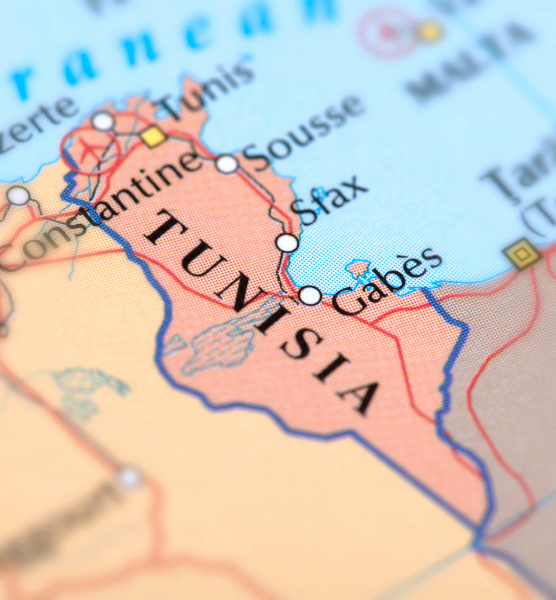
Recipes
Tunisian Potato and Meat Casserole
6 to 8 Servings
Ingredients:
6 large eggs lightly beaten
2 cups of mashed potatoes or 6 slices of white bread, soaked and squeezed
3 hard boiled eggs, chopped
¼ to ½ cup of chopped fresh flat-leaf parsley
About 1 teaspoon table salt or 2 teaspoons kosher salt
Ground Black pepper to taste
½ teaspoon of ground tumeric (optional)
3 tablespoons vegetable or olive oil
1 large yellow onion chopped
1 to 2 cloves of garlic, minced
1 pound of ground beef or lamb chuck or 8 oz of chopped roast beef
Instructions:
1. Preheat oven to 350℉. Grease a 9-by-13 inch or 7-by-11 inch baking pan.
2. In a large bowl, combine the eggs, potatoes, hard-boiled eggs, parsley, salt, pepper, and turmeric (If using).
3. In a large skillet, heat the oil over medium heat. Add the onion and garlic and sauté until soft and translucent, 5 to 10 minutes.
4. Add the meat and cook, stirring, until it loses its red color, about 5 minutes. Remove from heat and stir in the potato mixture.
5. Spoon into the prepared pan. Bake until golden brown, about 30 minutes.
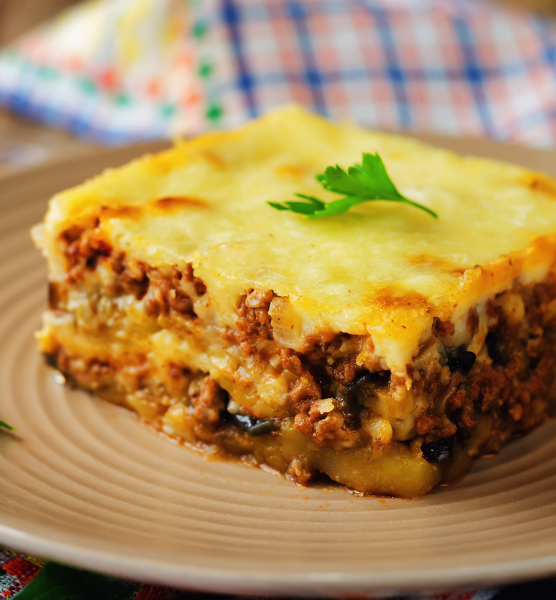
Tunisia Challah Tradition
Challah is a quintessential part of Rosh Hashanah celebrations around the world. In Tunisia, they take the traditional spiral loaf that is used to commemorate the cycle of life and add their own unique flair. They top their Challah loaf with the shape of an open hand. This is used to symbolize the period of reflection before Yom Kippur.
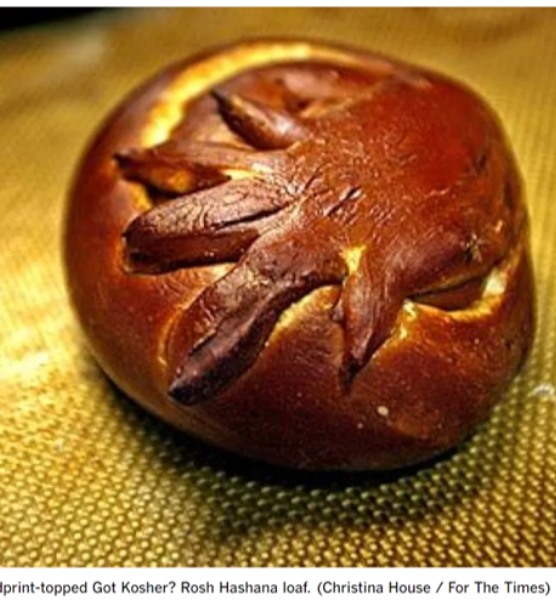
Activity
Tunisia Tile Rosh HaShanah Card Craft
In Tunisia, they are famous for their hand painted ceramic tiles. They come in a variety of patterns, and colors, and are sought after around the world. You can make your own Tunisian tiles at home and turn them into a Rosh HaShanah card!
First, print out this template on cardstock paper:
- Then, you can get creative with the tiles and color them in how you would like with crayons, colored pencils or markers.
- Next, you will fold the paper in half, first on the long side, making sure the design is on the outside. Then, fold your paper in half once again so your card has a design on both the front and the back.
- Last, write your Rosh HaShanah message inside and give to a family member or friend to wish them a happy New Year!
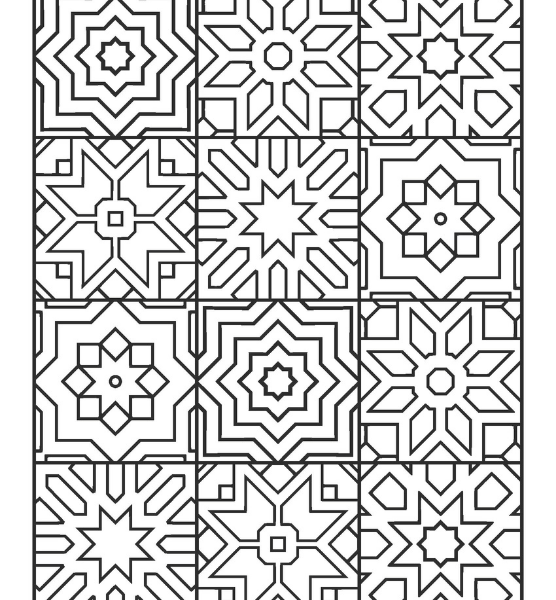
Uganda
The Abuyudaya Jewish community in Uganda exists today thanks to one man, Semei Kakungulu. Christian missionaries flooded Uganda to convert Uganda to a Monotheistic Christian country. Through readings of the bible, Semei Kakungulu found himself adhered to the old testament and broke away from the church in the early 1900s. Kakungulu set down the pathway for this Jewish community to form throughout the years of 1928 to 1986. Today there are more than 2,000 members of this community.
Many common traditions for the High Holy Day are practiced in Uganda, but their uniqueness in traditions lay in song. It is the custom for all Jews around the world to read The song of Moses (Deut. 32), which according to the Torah should be memorized between the High Holy Days and the holiday Sukkot. This chapter is a song of praise to God that summarizes much of the Torah preceding it. In Uganda they sign this passage rather than just speak the words.
Rosh Hashanah is a wonderful celebration in many Jewish communities, including this community in Uganda, but it is also a time for reflection and bettering oneself. You can help the country of Uganda, as well as other communities get the clean water they need through a Cleveland based organization called Drink Local Drink Tap. Here’s a letter from their founder, a friend of jHUB, Erin Huber Rosen:
Letter to jHUB Families from Erin Rosen
Consider making an impact to help others have what they need to live each day and enjoy their High Holy Days celebrations. Now, let’s get into the recipes and crafts you can make and music you can listen to to bring Ugandan tradition into your home this holiday!
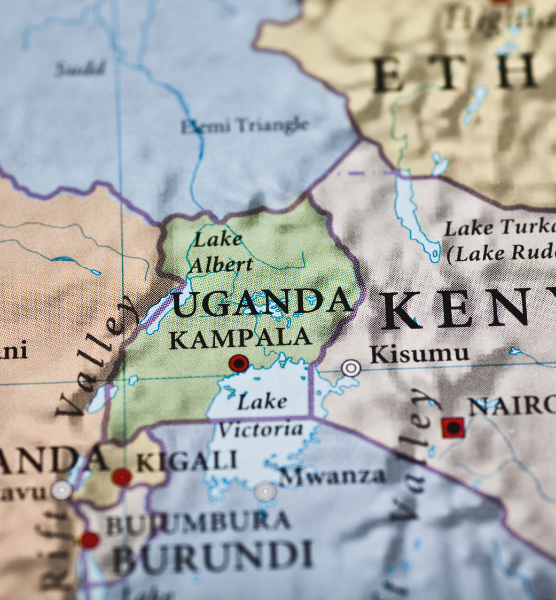
Recipes
Ugandan-Style Braised Greens with Okra and Peanut Sauce
Serves 4-6
Ingredients:
1 pound kale or collard greens, rinsed, stemmed, and shredded
½ pound okra, rinsed and sliced
½ cup coconut milk
½ cup water
½ cup chunky peanut butter
¼ cup sesame seeds
Kosher salt and pepper to taste
Instructions:
1. Place a large pot over medium heat. Add the greens, okra, coconut milk, and half of the water. Stir to combine, cover, and allow to steam for 10 minutes. Meanwhile, combine the peanut butter with the remaining water, stirring until thoroughly mixed.
2. Add the thinned peanut butter and the sesame seeds to the pot. Stir to combine. Season with salt and pepper to taste, cover, reduce heat to low, and allow to braise for 15 minutes. Stir every 5 minutes to be sure the peanut butter does not scorch.
3. Serve as a side dish or as a vegetarian main dish accompanied with rice or Ugali (Corn Meal Mush).
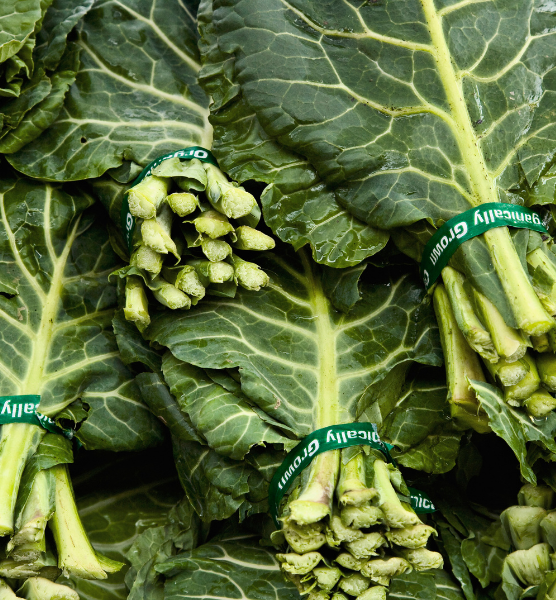
Yom Kippur Prefast Festival Meal
To prepare for the fast for Yom Kippur, the Ugandan Jewish Communities eat a festive meal. This meal consists of eggs, rice, and flat, wheat-based chapati bread. These foods are their pre-fast picks because it helps them feel full and ready for the Day of Atonement.
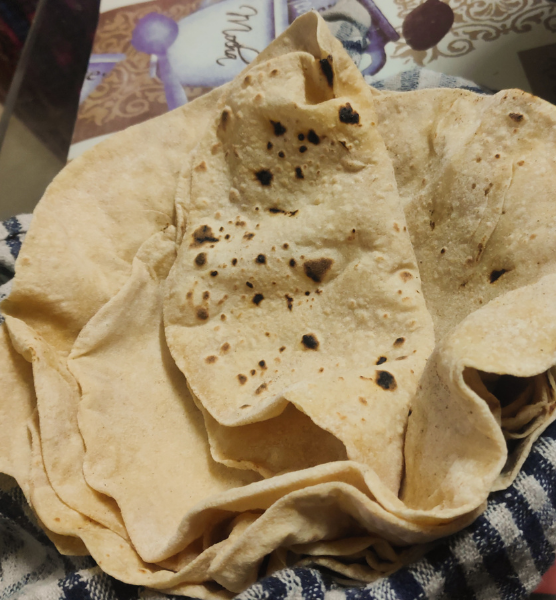
Activity
Ugandan Paper Bead Craft
Paper Beads are one of the oldest crafts in the African continent and you can make them right from your home!
Here is what you will need:
-Plain paper or cardstock for template
-Pencil, pen or markers
-Colorful paper (magazines, gift wrap, maps, or other paper)
-Scissors or paper cutting board
-Ruler
-Mod Podge or any type of glue such as glue sticks or bottled glue
-Clear or glitter nail polish
-Coffee Stir Sticks, thin straws, toothpicks, cotton swabs with cotton ends cut, or wire (These are for wrapping paper around. What you choose depends on the size of bead hole desired.)
-Paint Brushes for applying the glue
-Foam board, cups or modeling clay (to use as holder for drying beads)
-Paper towels or wet cloths for clean up
-String or wire
Instructions:
- Grab your ruler, pencil, scissors and plain paper or cardstock to create your own templates for making beads. You can create long, rectangular, tapered, or triangular shapes that are 1/2 inch to 3/4 inch wide at one end and from 6 inches to 10 inches long. The choice is yours! One you have created your desired shape, cut it out. Then trace the template onto colored paper and cut the colored paper out.
- Start at the widest end of one colored paper strip and wrap it around the straw or wire that you chose then apply glue to the end of the strip of paper to help hold it together.
- Roll the beads slowly and evenly making sure to smooth the paper and keep the edges even.
- Place the bead you just formed onto a foam board or modeling clay to allow it to dry for a few minutes.
- Once the glue has dried, use the clear or glitter nail polish to give all the beads a protective coating. If you would like a more matte look, you can cover with the glue or Mod Podge. Apply additional coats if needed. Two to three coats of polish are recommended.
- Place the bead back on the foam board or modeling clay to allow it to dry once again.
- Once the bead is completely dry, slide it off the stick or straw.
- You can now string the beads on whatever you’d like to create bracelets, necklaces, and more!
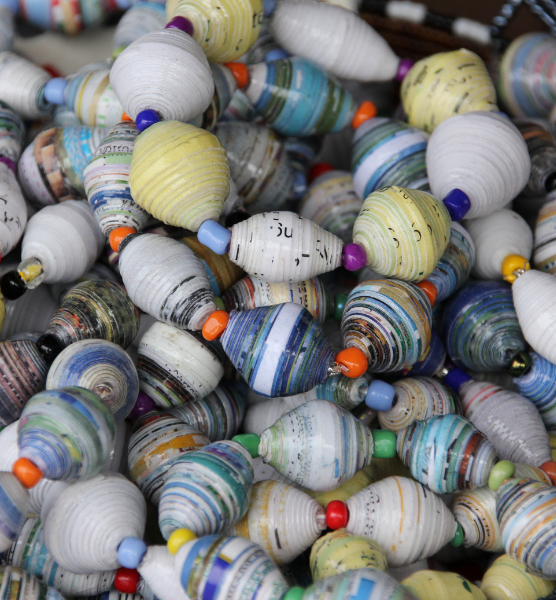
India
The history of the Jewish community in India can be traced back to over 2,000 years ago. There are three distinct groups within the Jewish community in India that each arrived to the country at different points in history, shaping their Jewish experiences in unique ways. The first group is the Cochin Jews. They first arrived in India around 50 CE, and it is believed they fled there after the deconstruction of the First Temple. Next is the Bene Israeli group. While their exact arrival time to the country is unknown, it is believed that it was between 1600 and 1800 years ago. They are the largest Jewish group in India. The final group is the Baghdadi Jews and they made their way to India by the mid 18th and 19th century. This group is most noted for establishing Jewish schools, kosher markets, and ritual baths in India. Today, there are more than 6,000 individuals in the Jewish community across India. They take pride in both their Jewish and Indian identities and have developed strong, distinctive traditions.
When it comes to traditions for the High Holy days, one that sets this community apart is their Rosh HaShanah Seder. Referenced in the introduction of this Rosh HaShanah “box” is this Rosh HaShanah haggadah, written and designed by our friends at Kol HaOt for the Charles and Lynn Schusterman Family Foundation. This can be used as a guide for an Indian Seder. It goes beyond the Seder that most know with apples and honey. On the first night of the holiday they recite blessings over a variety of food, including dates, string beans, pumpkin and more! This is all to symbolize their wishes for the year ahead. View all of the blessings and learn more about this tradition here.
Along with their special Rosh Hashanah Seder, they also have several other food traditions that are distinctive to their community and Indian roots. On the first night at home before they start the service, they have a Rosh HaShanah halwa. This is a sweet dish made with milk, spices and nuts. They also share hearty meals together that include curry, meat, rice and potatoes.
Dive into the incredible and unique traditions of the Jewish community in your home with their delicious recipes, activities and music below!

Recipes
Milk Halwa
Recipe by Shulie Madnick
Ingredients:
1 liter whole milk (4 cups)
1/2 liter water (2 cups)
1 1/2 cups sugar
1 cup cornstarch (130gr)
1/2 teaspoon freshly ground cardamom
1 stick (4oz/113gr) unsalted butter, unsalted margarine or ghee (clarified butter)
1/4-1/2 cup sliced or chopped roasted, unsalted pistachios
1/4-1/2 cup sliced or chopped roasted, unsalted almonds
Instructions:
1. Grease 2-3 shallow pans (you can use different size pans, including a pie dish).
2. Put the milk, water, sugar and cornstarch into a large pot and stir with a large stainless spoon until all ingredients are mixed well and the liquid is lump free and smooth.
3. Put the pot on the stove and turn the heat to medium low. Start cooking the halwa while constantly stirring the milk. It will take approximately 10 minutes to start warming up. Don’t get tempted to turn up the heat; Hurried cooking will curdle the milk and create lumps. Stir continuously for another 10 minutes while cooking.
4. When the milk starts thickening, add the butter in small pieces and the cardamon. Continue stirring until the milk thickens to the consistency of a smooth porridge, for approximately 40 minutes total. Pour immediately into the shallow, greased pans approximately 1 inch deep, and sprinkle with nuts.
5. Let cool completely at room temperature, then cover with plastic wrap and refrigerate for at least a few hours. This is best prepared a day in advance.
6. Slice diagonally into diamonds before serving. Best when eaten within two days.
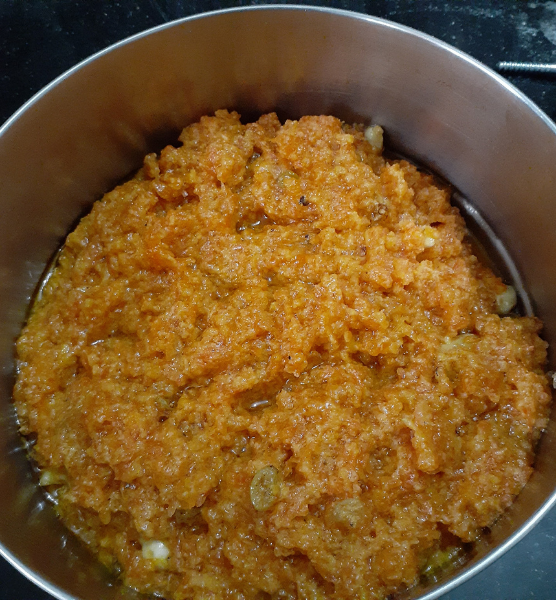
Alu Makala
(Brown potatoes made in the style of the Jews of Calcutta)
8 servings
Ingredients:
1 quart vegetable oil
1/2 pound chicken fat, cut into small pieces (or 1/2 quart more vegetable oil)
1 teaspoon turmeric
1 tablespoon salt
6 old, round and smooth potatoes, peeled
Directions:
1. Heat oil and fat together until chicken fat is melted. Strain out brown remains of the fat.
2. Boil a large pot of water; add turmeric and salt. Cook potatoes for about 4 minutes. Drain and dry thoroughly. Heat fat and oil mixture until smoking. Add dried potatoes and turn heat to low. Cook slowly for about 1 hour. Do not allow potatoes to brown.
3. Cool in the fat. Remove and prick each with a long pin in several places; return to oil. Leave 3 to 4 hours. Shortly before serving, place the pan over high heat until potatoes are golden brown all over. Serve while warm.
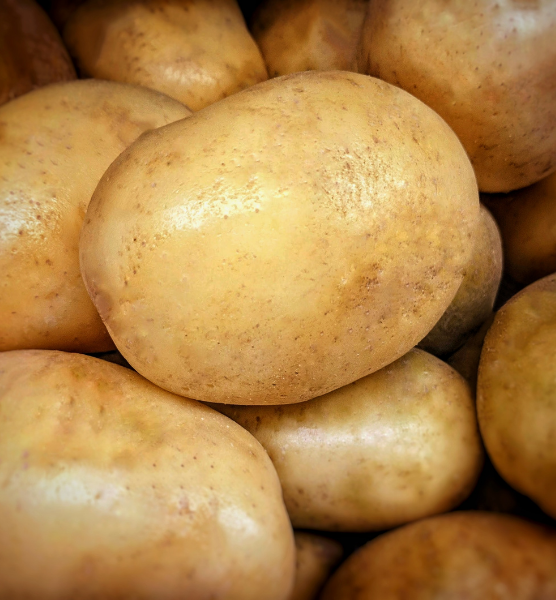
Activity
Henna Hand Hamsa
The hamsa is a symbol with an eye in the palm of an open hand. While it goes by several names, such as the eye of Fatima or the hand of Miriam, the meaning of this symbol remains the same. In history it was used to invoke the hand of God and protect from the evil eye. It is now widely known as an important symbol of Jewish art.
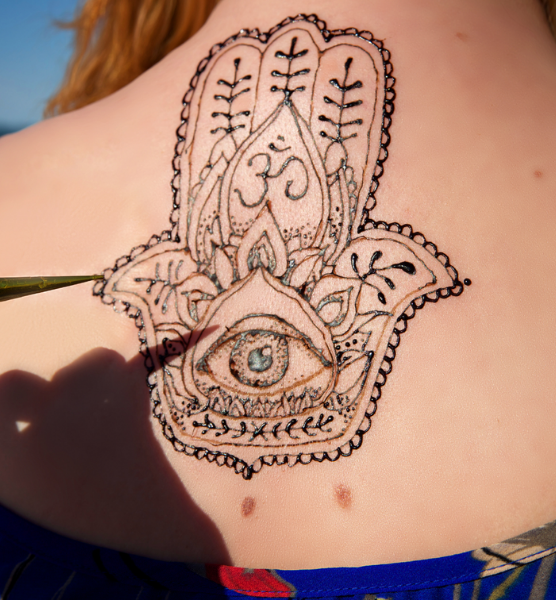
The Jewish community in India will use henna to put the hamsa symbol on themselves, whether that is on their hand, arm, etc. You can do this at home by purchasing henna and use the images of the hamsa below as reference to wear this historic Jewish symbol on you. You can purchase your henna on Amazon or a variety of other retailers. It is important to ensure that it is natural henna for best use.

Chapter 4: Join Our jHUB Community
We can’t wait to see how you incorporate these traditions from around the world into your High Holy Days celebrations!
Share with us on:
Facebook: https://www.facebook.com/jHUBCle
Instagram: https://www.instagram.com/jhubcle/
Twitter: https://twitter.com/jhubcle/
Pinterest: https://www.pinterest.com/jhubcle/
Looking for More Resources & Information on Upcoming jHUB Events?
Head to our website at jHUBCLE.org and join our email list.
Wishing you a meaningful and joyous Rosh HaShanah! We look forward to connecting with you.